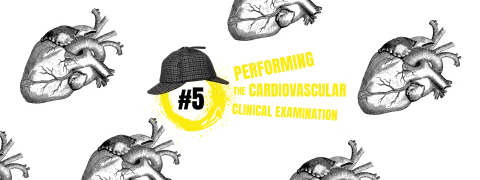
Dans ce quatrième numéro, vous trouverez une nouvelle contribution présentant l’abstract et les mots-clés.
The abstract is an overview of the article and, depending on its content and interest, readers will decide whether or not they will read the whole article. It therefore has to be both clear and informative.
L’abstract donne une vue d’ensemble de l’article et, en fonction de son contenu et de l’intérêt qu’il présente, les lecteurs décideront de lire l’article en entier ou non. Il doit donc être à la fois clair et informatif.
Instructions to Authors (see What’s up Doc? N°3) will indicate whether a structured or unstructured abstract needs to be used. The trend is towards structured abstracts which are easier to read because each section is headed (IMRAD). Generally, the abstract should contain between 150 and 250 words.
Les Instructions aux Auteurs (cf What’s up Doc? N°3) préciseront si l’abstract doit être structuré ou non. La tendance est aux abstracts structurés, plus faciles à lire puisque chaque partie à un sous-titre (IMRED). En règle générale, l’abstract doit comporter entre 150 et 250 mots.
Keywords (usually five or six) are used for indexation and should be chosen carefully so that the article will be identified in database searches (for example, for meta-analyses…).
Les mots clés (cinq ou six en général) sont utiles pour l’indexation et doivent être choisis avec soin de manière à ce que l’article puisse être identifié lors de recherches dans les bases de données.
Here is an example of a structured abstract:
Voici un exemple d’abstract structuré:
Introduction - Extracorporeal circulation of blood through plastic tubing activates several processes including systemic inflammation and oxidative stress. These phenomena are thought to contribute to the neurological and cardiovascular side effects seen in patients who have undergone cardiopulmonary bypass (CPB). In diabetic patients, hyperglycemia has been shown to have a direct relationship with both morbidity and mortality. However, it is still unclear whether perioperative hyperglycemia affects the risk of adverse events in cardiac surgery. The aim of this study was to determine the impact of hyperglycemia on inflammation and oxidative stress in patients under CPB during cardiac surgery.
Materials and Methods - Control patients (n = 17) and type 2 diabetic patients (n = 13) were included in this study. Blood samples were taken before, during and after CPB. All of the patients included in the study had undergone PCI in the previous six months.
Oxidative stress was assessed in the plasma by direct and indirect approaches. The amount of Ascorbyl radicals was measured directly by electron spin resonance spectroscopy. The Ascorbyl radical/vitamin C ratio is an indicator of the degree of oxidative stress in the plasma. Oxygen radical absorbing capacity (ORAC) values were used to indicate the antioxidant capacity of the plasma. We measured the evolution of plasma concentrations of interleukin 6 (IL 6) to determine the inflammation profiles of the patients.
Results - During cross clamping and in the post-CPB period, the Ascorbyl radical/vitamin C ratio increased; the ratio was higher in diabetic patients. Concomitantly, ORAC values decreased in all of the patients during cross clamping (pincreased during CPB.
Conclusion - In conclusion, the current study indicated that systemic oxidative stress occurred during CPB and the post-CPB period and that in type 2 diabetic patients systemic oxidative stress was higher than that in non-diabetic patients. Treating hyperglycemia in such diabetic patients could improve outcomes after CPB.
Keywords: oxidative stress, cardiopulmonary bypass, type 2 diabetes, hyperglycemia, adverse events.
Particular attention needs to be paid to tense usage in each section.
Une attention toute particulière doit être portée à l’utilisation des temps dans chaque partie.
- The Introduction section, also called Aims, Objective(s) or Background gives background information, and states the reasons for the study. Here, the simple present and the present perfect are used to describe the state of current knowledge in the form of established facts and current hypotheses.
- La partie Introduction, parfois appelée Objectifs ou Contexte donne des informations sur les sources et présente les raison d’être de l’étude. Le simple present et le present perfect sont utilisés pour décrire l’état présent des connaissances en tant que faits établis et hypothèses actuelles.
Ex. Simple present: Extracorporeal circulation of blood through plastic tubing activates several processes including systemic inflammation and oxidative stress. (established fact)
Ex. Simple present: These phenomena are thought to contribute to the neurological and cardiovascular side effects observed in patients under cardiopulmonary bypass (CPB). (current hypothesis)
The use of the present perfect highlights the dynamic nature of the field of research.
L’utilisation du present perfect met en valeur la nature dynamique du domaine de recherche.
Ex. Present perfect: In diabetic patients, hyperglycemia has been shown to have a direct relationship with both morbidity and mortality. (dynamic nature)
This section also presents the aim of the study. Here, the simple past is used.
Cette partie présenté également les objectifs de l’étude. Dans ce cas, le simple past est de rigueur.
Ex. Simple past: The aim of this study was to determine the impact of hyperglycemia on inflammation and oxidative stress in patients under CPB during cardiac surgery.
- The Methods section, also called Patients and Methods or Materials and Methods, describes the procedures, statistical analyses and techniques that were used to generate the data. The Results section gives uncommented results in the form of raw data and the findings of the main statistical analyses. In these sections, the simple past is used to report what was done, how and why it was done, and what was found by the authors. Moreover, the passive voice is often used to describe processes, statistical analyses and methodology. In some cases, the past perfect is used to report criteria, data and findings related to a period prior to the study.
- La partie Méthodes, parfois appelée Patients et Méthodes ou Matériaux et Méthodes décrit les procédures, les analyses statistiques et les techniques utilisées pour générer des données. La partie Résultats fournit des résultats sans commentaires sous forme de données brutes et les conclusions des principales analyses statistiques. Dans ces parties, le simple past est utilisé pour rapporter ce qui a été fait, comment et pourquoi cela a été fait, et ce que les chercheurs ont trouvé. De plus, la voix passive est souvent utilisée pour décrire les processus, les analyses statistiques et les méthodologies. Dans certains cas, le past perfect est utilisé pour rapporter les critères, données et résultats liés à une période antérieure à l’étude.
Ex. Simple past: Concomitantly, ORAC values decreased in all of the patients during cross clamping (p<0.05).
Ex. Simple past in the Passive voice: Blood samples were taken before, during and after CPB. Patients (n = 17) and type 2 diabetic patients (n = 13) were included in this study.
Ex. Past perfect: All of the patients included in the study had undergone PCI in the previous six months.
- The Conclusion(s) section establishes the link between the findings and the aim of the study, highlights the implications and suggests avenues for further research.
If a particular result is unequivocal, the simple present should be used. Otherwise, the simple past is used to show that the results cannot be generalized and only relate to the present study. As the conclusion often puts forward hypotheses and suggestions for further research, modals are frequently used.
- La partie Conclusion fait le lien entre les résultats et les objectifs de l’étude, met en valeur les enjeux et propose de nouvelles pistes de recherche.
Si un résultat particulier est sans équivoque, le simple present doit être utilisé. Dans les autres cas, on utilise le simple past pour montrer que les résultats ne peuvent pas être généralisés et ne concerne que l’étude en cours. Comme la conclusion propose souvent des hypothèses et des pistes de recherche complémentaires, les formes modales sont fréquemment utilisées.
Ex. Simple past: in type 2 diabetic patients systemic oxidative stress was higher than in non-diabetic patients.
Ex. Modals: Treating hyperglycemia in such diabetic patients could improve outcomes after CPB.
Didier Carnet, Jean-Pierre Charpy, Philip Bastable, Professeurs d’anglais de l’UFR de médecine de Dijon













